Accelerate > Publications
Search this online library featuring the latest FAO publications, issue papers and briefs which offer up-to-date knowledge and innovative insights for SDG acceleration.
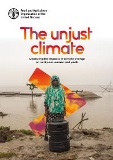
The unjust climate: Measuring the impacts of climate change on rural poor, women and youth
2024
This report assembles an impressive set of data from 24 low- and middle-income countries in five world regions to measure the effects of climate change on rural women, youths and people living in poverty. It analyses socioeconomic data collected from 109 341 rural households (representing over 950 million rural people) in these 24 countries. These data are combined in both space and time with 70 years of georeferenced data on daily precipitation and temperatures.
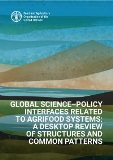
Global science–policy interfaces related to agrifood systems: a desktop review of structures and common patterns
2024
This background paper to the guidance that FAO is developing on strengthening science–policy interfaces (SPIs) for agrifood systems at the national level sets provides information about the structures and patterns common to global SPIs.

Loss and damage and agrifood systems - Addressing gaps and challenges
2023
The purpose of this report is to stimulate discussions on the central role of agrifood systems in the loss and damage debate and identify the gaps in data, knowledge and finance that need to be addressed. The report provides an overview of the loss and damage concept, the status of analytical methodologies and tools, a summary of the reporting on loss and damage in nationally determined contributions (NDCs), an outline of the policy needs and some preliminary analysis of the financing needs.

The State of Food and Agriculture 2023 - Revealing the true cost of food to transform agrifood systems
2023
The State of Food and Agriculture 2023 looks into the true cost of food for sustainable agrifood systems. The report introduces the concept of hidden environmental, health and social costs and benefits of agrifood systems and proposes an approach – true cost accounting (TCA) – to assess them.
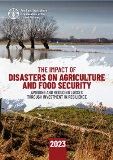
The Impact of Disasters on Agriculture and Food Security 2023 - Avoiding and reducing losses through investment in resilience
2023
The FAO flagship report on ‘The Impact of Disasters on Agriculture and Food Security’ provides a timely and comprehensive overview of how disasters are affecting agriculture and food security around the world. The report provides examples of actions and strategies for investing in resilience and proactively addressing risks in agriculture. It demonstrates ways to mainstream disaster risk into agricultural practices and policies..

Guidelines for measuring gender transformative change in the context of food security, nutrition and sustainable agriculture
2023
These Guidelines include step-by-step guidance to formulate qualitative and quantitative indicators of gender transformative change to help gender experts and food security, agriculture and nutrition programme specialists in their efforts to design, implement, monitor and evaluate gender transformative interventions. These indicators should be distinctive from and a complement to other reach, benefit and empower indicators intended to contribute to gender equality outcomes in food security,...
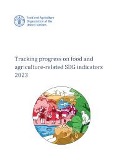
Tracking progress on food and agriculture-related SDG indicators 2023
2023
At the mid-point of the Agenda 2030 for Sustainable Development, there is an urgent need to understand where the world stands in eliminating hunger and food insecurity, as well as in ensuring sustainable agriculture. The new report of the Food and Agriculture Organization of the United Nations (FAO),offers analysis and trends on indicators across eight Sustainable Development Goals (SDGs) – in particular, SDGs 1, 2, 5, 6, 10, 12, 14 and 15.
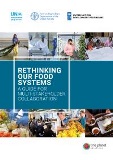
Rethinking our food systems: A guide for multi-stakeholder collaboration
2023
This guide aims to support stakeholders working at all levels of the food system in the implementation of actions to transform their food systems. Centered on 5 building blocks underpinning successful multi-stakeholder collaboration for food systems transformation, the guide uses these constructions to illustrate ingredients of the process and show the interconnectedness of the steps needed to be successful.

Towards durable solutions: Sustainable reintegration of the forcibly displaced
2023
This brochure provides an overview of FAO’s approach to supporting the sustainable reintegration of the forcibly displaced. It is part of a series of briefs on durable solutions, which highlight key approaches to forced displacement programming and policy, including tailored approaches to partnerships, data and evidence, with a view to achieving durable solutions to forced displacement including when conditions allow for a safe and dignified return.

2023 SDG Summit: FAO Key Messages
2023
The 2023 SDG Summit will serve as a pivotal event towards achieving the SDGs, as gathered Heads of State and Government are to carry out a comprehensive review of progress, respond to the impact of multiple crises, and provide high-level political guidance on transformative and accelerated actions for achieving the 2030 Agenda. FAO has developed these key messages to inform the discussions in the lead up to and during this Summit and the Political Declaration which will result from them.

The status of women in agrifood systems
2023
This new FAO report provides a comprehensive picture of the status of women not only in agriculture, but across agrifood systems. It presents extensive data and lessons learned about gender in agrifood systems, with particular focus on how women participate in and benefit from socio-economic opportunities.
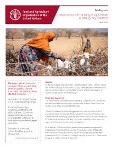
Importance of investing in agriculture in emergency contexts
2023
With 222 million people experiencing high acute food insecurity across 53 countries, and an alarming food security outlook for 2023, investing in agriculture in emergency contexts has never been so critical. Agriculture assistance is life-saving. It is significantly less expensive to help rural families produce food, than to provide them food.

Inclusive is not enough – Agrifood value chains need gender-responsive business development
2023
This brief, jointly developed by the FAO Regional Office for Africa and the FAO Regional Office for the Near East and North Africa, aims to trigger a critical reflection on the concept of “inclusive” agribusiness and propose a new definition that highlights the importance of considering gender equality and women’s empowerment as an integral component of agribusiness development.

A rapid review of effective financing for policy, implementation and partnerships addressing drought risks
2022
The report presents an overview of current knowledge and thinking concerning the effectiveness of three distinct layers of financing that set out to address drought risks in different ways. For each of these, results are conceptualized and measured in different ways for disaster risk reduction, adaptation to climate change, and transformative green finance.
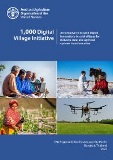
1,000 Digital Village Initiative - An initiative to expand digital innovations in rural villages for inclusive rural and agrifood systems transformation
2022
This report introduces the FAO Digital Village Initiative, which aims to facilitate through knowledge and information. It approaches countries and communities to develop, accelerate and deploy digital technologies in rural villages and communities. The report introduces the Digital Village Ecosystem approach. It describes an instrument (tool) to gather information and provide a village ecosystem assessment to help generate recommendations for future interventions to deploy beneficial, ...
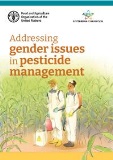
Addressing gender issues in pesticide management
2022
The Rotterdam Convention Secretariat (NSPRD) and the Gender team in ESP developed this publication with the objective of highlighting the gender-related implication of pesticide use and management, focusing on the role of women in handling hazardous pesticides in agriculture, the reasons why they are at higher risk and the health-related implications they face. The brochure provides an overview of how FAO addresses the topic ...

Labelling and certification schemes for Indigenous Peoples' foods
2022
This review, for the first time to date, analyses the potential of labelling and certification schemes for Indigenous Peoples to market their food products. Specifically, it looks at those schemes that are designed by, with and for Indigenous Peoples, and that can provide economic, social and environmental benefits while protecting and promoting their unique values centered around the respect of life and Mother Earth.
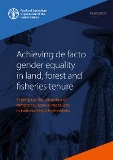
Achieving de facto gender equality in land, forest and fisheries tenure - Scaling up the adoption of temporary special measures in national legal frameworks
2022
This legal paper first considers the obligations of states in relation to gender equality and the adoption of temporary special measures, and the work of the Convention on the Elimination of All Forms of Discrimination Against Women (CEDAW) Committee in clarifying and expanding the concept of temporary special measures.

South-South in Action - South-South and triangular cooperation in agricultural development: FAO's experiences
2022
This publication outlines key features of South-South and Triangular Cooperation (SSTC) and how FAO has applied SSTC to the delivery of its mission. The case studies presented provide a window on how SSTC has contributed to alleviating hunger and malnutrition in countries across the global South and has helped build resilience in the face of climate change and other development challenges.
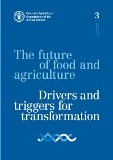
The future of food and agriculture – Drivers and triggers for transformation
2022
This report aims at inspiring strategic thinking and actions to transform agrifood systems towards a sustainable, resilient and inclusive future, by building on both previous reports in the same series as well as on a comprehensive corporate strategic foresight exercise that also nurtured FAO Strategic Framework 2022–31. It analyses major drivers of agrifood systems and explores how their trends could determine alternative futures of agrifood, socioeconomic and environmental systems.
Browse by SDG
- SDG1: No Poverty
- SDG2: Zero Hunger
- SDG3: Good Health & Well-being
- SDG4: Quality Education
- SDG5: Gender Equality
- SDG6: Clean Water & Sanitation
- SDG7: Affordable and Clean Energy
- SDG8: Decent Work and Economic Growth
- SDG9: Industry, Innovation and Infrastructure
- SDG10: Reduced Inequalities
- SDG11: Sustainable Cities and Communities
- SDG12: Responsible Consumption and Production
- SDG13: Climate Action
- SDG14: Life Below Water
- SDG15: Life on Land
- SDG16: Peace, Justice and Strong Institutions
- SDG17: Partnerships for the Goals
Browse by Better
Browse by Priority Area
- Innovation for Sustainable Agriculture Production
- Blue Transformation
- One Health
- Small-Scale Producers' Equitable Access to Resources
- Digital Agriculture
- Healthy Diets for All
- Nutrition for the Most Vulnerable
- Safe Food for Everyone
- Reducing Food Loss and Waste
- Transparent Markets and Trade
- Climate Change Mitigating and Adapted Agrifood Systems
- Bioeconomy for Sustainable Food and Agriculture
- Biodiversity and Ecosystem Services for Food and Agriculture
- Achieving Sustainable Urban Food Systems
- Gender Equality and Rural Women's Empowerment
- Inclusive Rural Transformation
- Agriculture and Food Emergencies
- Resilient Agrifood Systems
- Hand-in-Hand Initiative
- Scaling up Investment
